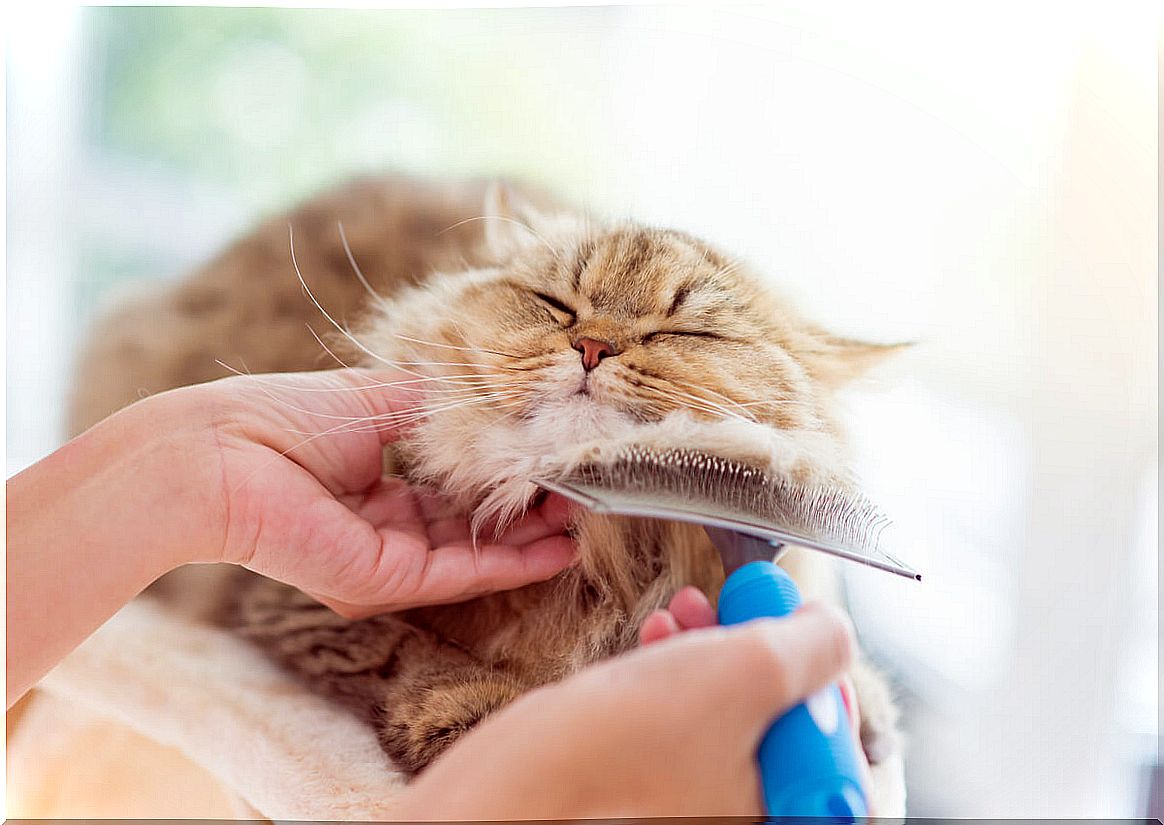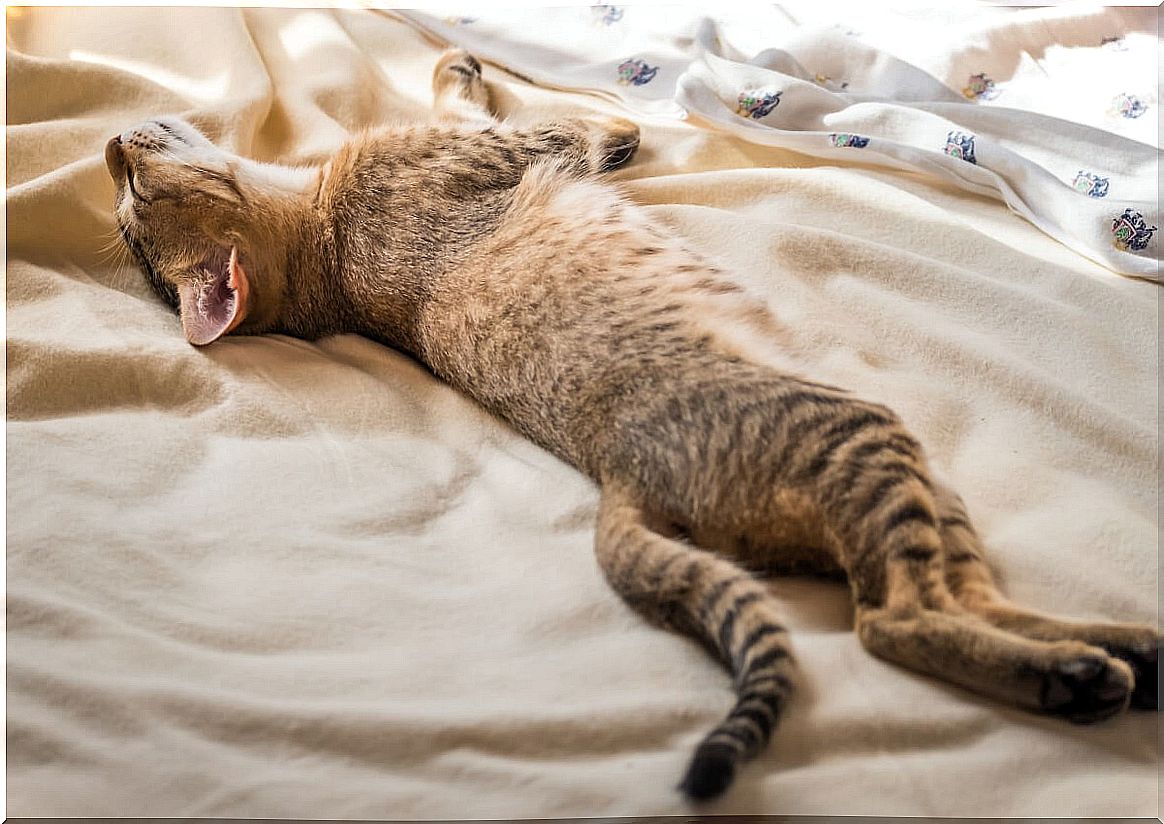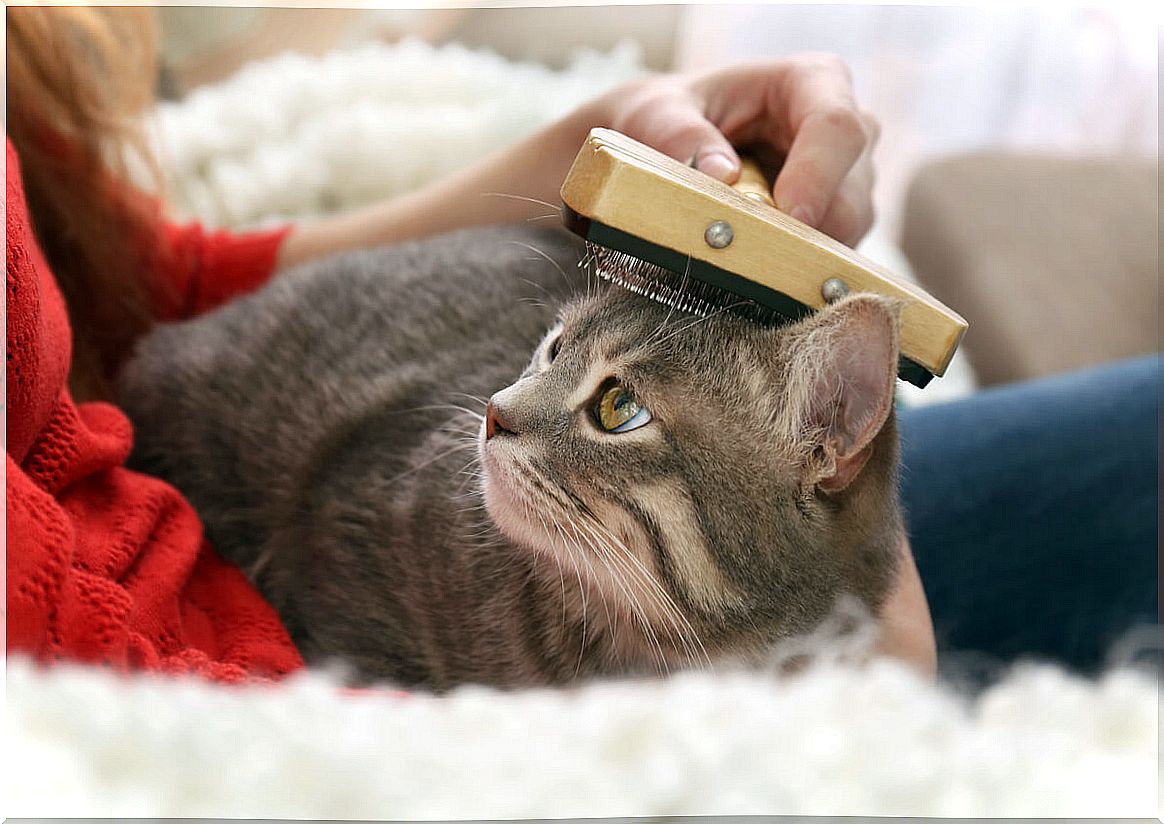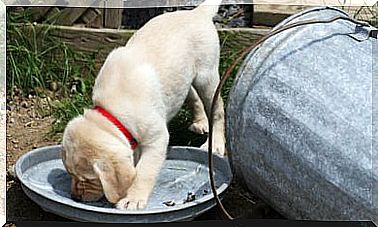4 Tips For Cat Skin Care

Caring for the skin of cats is as important as that of the rest of the body. Like any other organ, the skin can suffer from diseases and needs specific nutrients to stay healthy, since it is a tissue that is constantly exposed to various environmental stressors.
Information and advice on cat dermatological care can be contradictory in internet searches. Therefore, here are a series of general guidelines to keep the epidermis of any breed of feline healthy based on reliable sources.
Characteristics of the fur of cats
The skin is the largest organ in the body and cats are no exception. The thickness of the skin of cats is 0.4 millimeters, although it is thicker in the area of the extremities and the back and thinner in the belly. Among its basic functions, you can find the following:
- Protects the body from pathogens and external bodies.
- It works as a thermoregulator, as it isolates the animal’s body from changes in ambient temperature.
- It has a sensitive function that allows it to perceive the environment.
- Sends communicative signals: for example, when the cat bristles its fur, it sends a threatening message.

The skin as an indicator of general health
The condition of the skin and coat sends fairly reliable signals of the health of your cat. There are several reasons why cats’ skin can be damaged:
- Poor diet: the lack of essential nutrients for capillary health quickly manifests itself in the appearance of the feline.
- Overweight: if the cat becomes too fat, it will be unable to reach certain parts of its body to groom itself.
- Old age : the loss of elasticity or the pain of old age can cause the cat to groom less than when it was young.
- Excess bathing: when the cat is groomed, in addition to removing dirt, it distributes essential oils important for the health of its skin. Therefore, too frequent baths can eliminate this layer of fat necessary to protect the dermis.
- Illnesses: pain or illness will stop the cat from grooming itself. On the other hand, conditions such as allergies or dermatitis also affect the appearance of a cat’s skin and hair.
As indicated by studies published in the National Library of Medicine, 36% of cats that go to the veterinarian for epidermal problems have skin inflammation. Exposure to corrosive chemicals can cause this condition to appear.
4 tips for cat skin care
As you could read before, the skin of cats is as important as the rest of the organs, so they cannot be abandoned, especially in hairless breeds, such as the sphynx. If you want to know how to keep it healthy and shiny, here are some tips.
1. Give him quality food
Giving it a balanced and specific feed is essential to keep your feline’s fur in good condition. Every diet must contain healthy proteins and high levels of omega 3 and 6 fatty acids. Extra foods, such as sweets or wet cans, must be dosed so as not to unbalance the diet.
As professional documents indicate, ideally 50% of the feline’s energy should come from protein sources. The remaining 30% will be natural fats – such as the fatty tissue present in meat and fish. Carbohydrates should account for less than 10% of caloric intake, but feed manufacturers sometimes use grains to cut costs.
2. Veterinary skin care for cats
Regular deworming of your feline, especially if it can go outside, is necessary for good skin maintenance. In any case, periodic veterinary check-ups are useful both for dermatological issues and for other aspects of the cat’s health.
3. Bathe only when necessary
In general, cats are very neat animals and they are enough on their own to keep clean. However, there may be times when you need to bathe him.
When this occurs, it is very important to minimize stress to the animal as much as possible. It can be done in a bathtub or large sink, with a mat that prevents it from slipping. You should use lukewarm water and make gentle movements.
Cleaning products have to be strictly made for felines. Only in this way will you guarantee that the skin or the pH of the cat’s epidermis is not altered. Depending on the pet’s habits, the frequency of bathing can vary between once a year and 2 times a month.
4. Brush it regularly
Dead hair that does not shed prevents the skin from breathing properly, increasing the risk of diseases, such as dermatitis or the proliferation of mites. Use a brush suitable for your feline’s coat — if it has short hair, you won’t be able to use combs with very long bristles, for example — so as not to damage the fur in the process.

Taking care of your cat’s fur and skin will not only give it a healthy and shiny appearance, but will also prevent problems at all levels: allergies, parasites, seborrhea and many more. You will even prevent your cat from having to vomit hairballs very often. The appearance of your feline, far from mere aesthetics, will be the best indicator you have to take care of its health.









